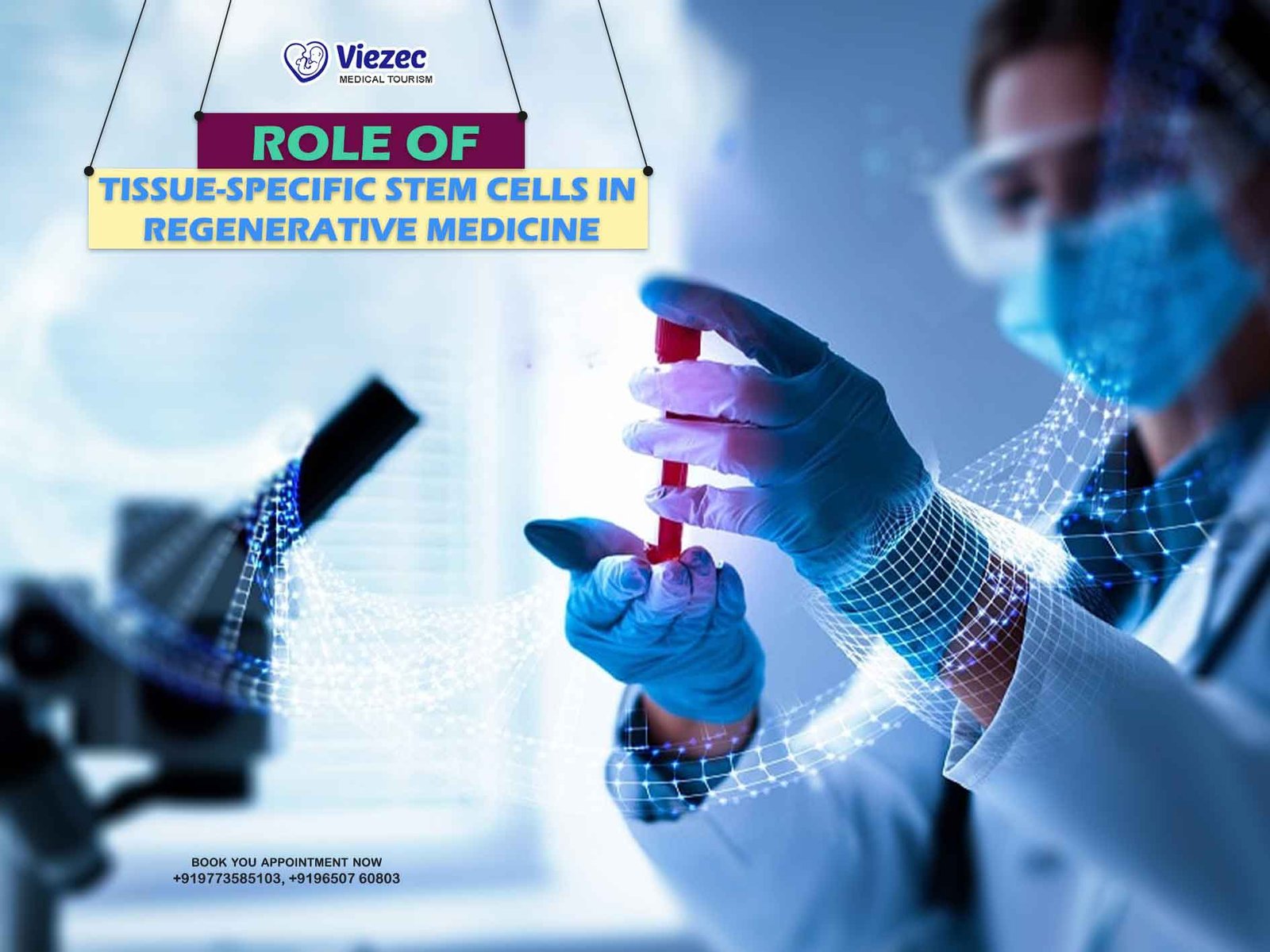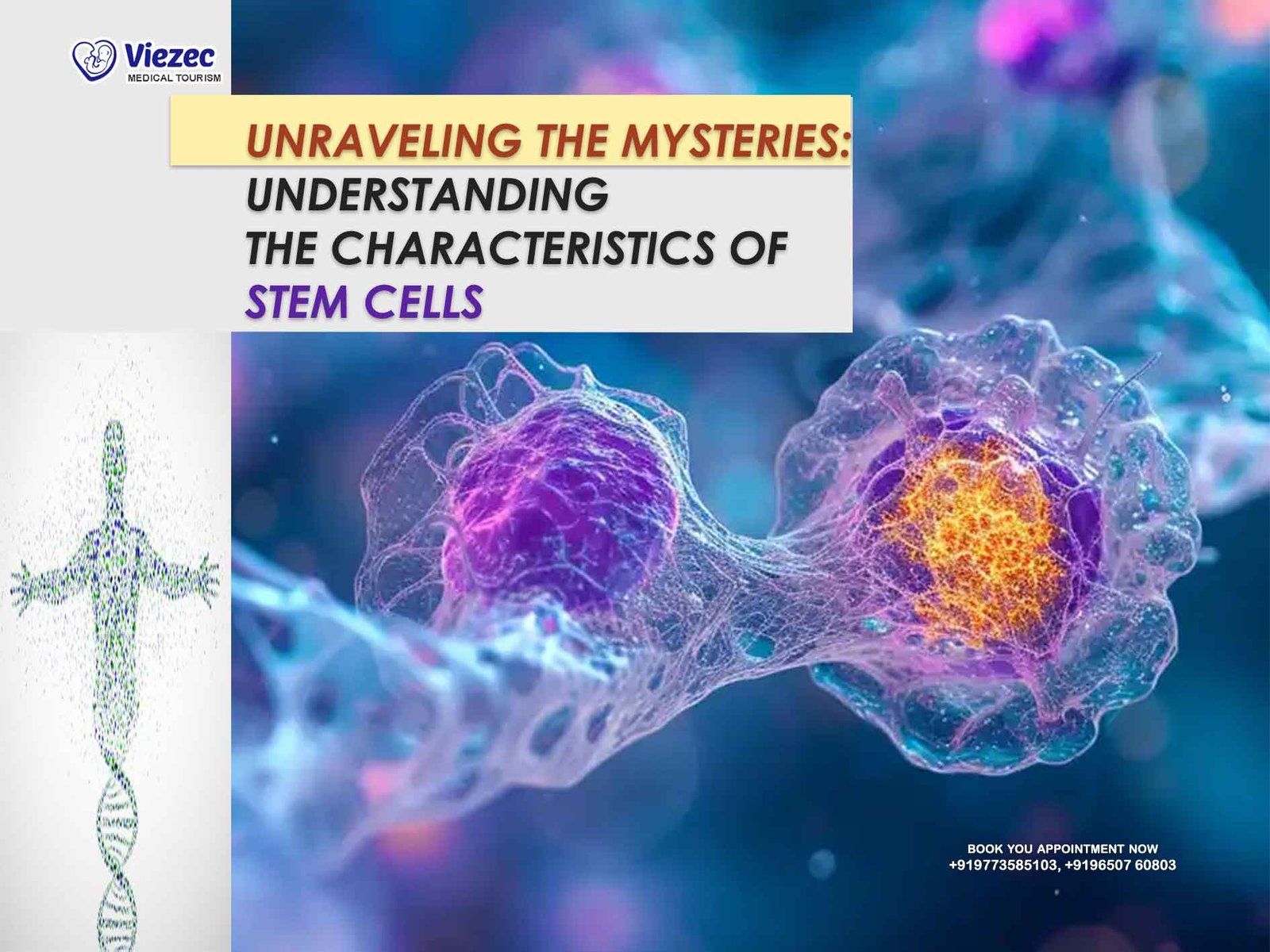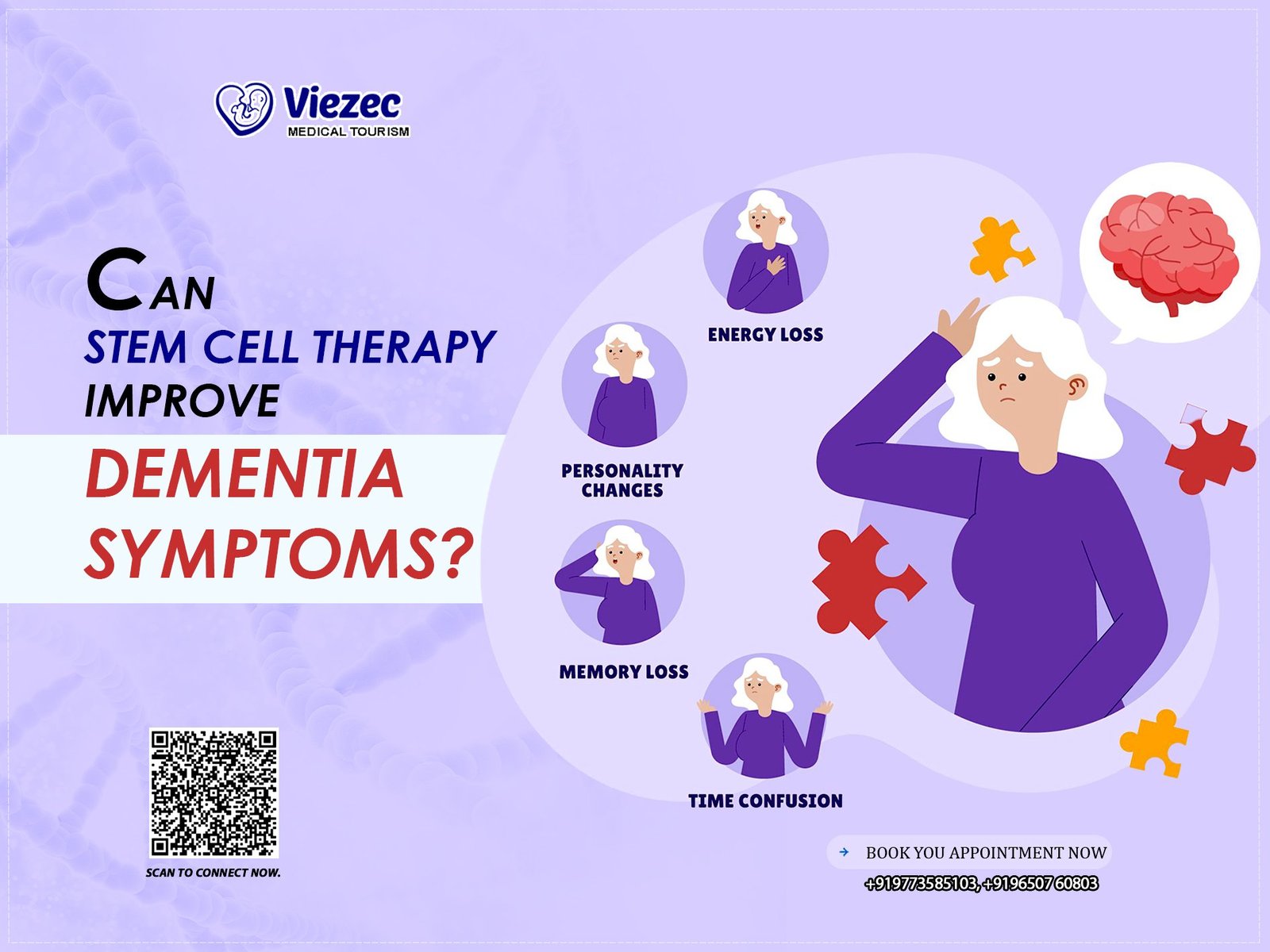Regenerative medicine is a rapidly evolving field focused on the repair and restoration of damaged tissues and organs. At the heart of this innovative approach are stem cells, which offer the potential to regenerate and replace damaged cells in the body. Among the different types of stem cells, tissue-specific stem cells hold particular promise due to their ability to directly target and repair specific tissues.
Tissue-Specific Stem Cells
Tissue-specific stem cells, also known as adult stem cells, are undifferentiated cells found within various tissues of the body. These cells play a crucial role in maintaining tissue homeostasis and regenerating damaged tissues. Tissue-specific stem cells are capable of self-renewal and differentiation into specialized cell types relevant to the tissue in which they reside.
Definition and Characteristics of Tissue-Specific Stem Cells
Tissue-specific stem cells have the following key characteristics:
- Self-renewal: They have the ability to undergo multiple rounds of cell division while maintaining their undifferentiated state, allowing them to replenish the stem cell pool over time.
- Differentiation potential: They can give rise to a variety of specialized cells, depending on the tissue in which they are located. This differentiation is often influenced by the local microenvironment and specific signaling pathways.
- Limited plasticity: Although they can differentiate into specific cell types, their differentiation potential is generally restricted to their tissue of origin.
Comparison with Other Types of Stem Cells
Tissue-specific stem cells differ from other types of stem cells, such as embryonic stem cells (ESCs) and induced pluripotent stem cells (iPSCs), in several ways:
Embryonic Stem Cells: ESCs are derived from early-stage embryos and can differentiate into any cell type in the body, making them pluripotent. In contrast, tissue-specific stem cells have a more restricted differentiation potential.
Induced Pluripotent Stem Cells: iPSCs are adult cells that have been genetically reprogrammed to an embryonic stem cell-like state, allowing them to differentiate into any cell type. While iPSCs hold great promise, there are concerns about their safety and potential for tumorigenesis.
Tissue-Specific Stem Cells: These stem cells are naturally present in adult tissues and are involved in the ongoing maintenance and repair of these tissues. They are generally considered safer and less ethically controversial than ESCs.
Types of Tissue-Specific Stem Cells
Tissue-specific stem cells are present in various tissues throughout the body, each with its unique properties and functions. Key types include:
Hematopoietic Stem Cells
Hematopoietic stem cells (HSCs) are responsible for the production of blood cells, including red blood cells, white blood cells, and platelets. These cells are primarily found in the bone marrow and are used in bone marrow transplants to treat blood disorders and cancers such as leukemia.
Neural Stem Cells
Neural stem cells (NSCs) are present in specific regions of the brain, such as the hippocampus and subventricular zone. These cells can differentiate into neurons, astrocytes, and oligodendrocytes, making them essential for brain development and repair.
Mesenchymal Stem Cells
Mesenchymal stem cells (MSCs) are multipotent stem cells found in various tissues, including bone marrow, adipose tissue, and umbilical cord tissue. They can differentiate into various cell types, such as osteoblasts, chondrocytes, and adipocytes. MSCs have gained attention for their anti-inflammatory and immunomodulatory properties, making them suitable for regenerative medicine applications.
Cardiac Stem Cells
Cardiac stem cells (CSCs) are involved in the regeneration and repair of cardiac muscle tissue. These cells can differentiate into various cardiac cell types, including cardiomyocytes, and have shown promise in treating heart diseases such as myocardial infarction.
Hepatic Stem Cells
Hepatic stem cells (HSCs) are responsible for the regeneration and maintenance of liver tissue. They can differentiate into hepatocytes and other liver-specific cell types, playing a crucial role in liver function and repair.
Muscle Stem Cells
Muscle stem cells, or satellite cells, are essential for muscle regeneration and repair. These cells are found in skeletal muscle and can differentiate into myoblasts, which subsequently fuse to form new muscle fibers during repair.
Skin Stem Cells
Skin stem cells reside in the basal layer of the epidermis and the hair follicles. These cells are responsible for the continuous regeneration of the skin and hair and can differentiate into various skin cell types.
Others (e.g., Intestinal and Pancreatic Stem Cells)
Other tissue-specific stem cells include intestinal stem cells and pancreatic stem cells:
Intestinal stem cells: Located in the crypts of the intestinal epithelium, these cells give rise to various cell types within the intestinal lining, ensuring proper digestion and absorption of nutrients.
Pancreatic stem cells: Found in the pancreas, these cells can differentiate into insulin-producing beta cells and other pancreatic cell types, offering potential for treating diabetes.
Sources and Isolation of Tissue-Specific Stem Cells
Tissue-specific stem cells can be sourced from various tissues throughout the body, depending on the type of stem cell required.
Natural Sources of Tissue-Specific Stem Cells
- Bone Marrow: A rich source of hematopoietic and mesenchymal stem cells, bone marrow is often used for stem cell transplants and regenerative therapies.
- Adipose Tissue: Adipose tissue contains mesenchymal stem cells, which can be isolated and used for various regenerative medicine applications.
- Blood: Hematopoietic stem cells can be collected from peripheral blood after mobilization with growth factors.
- Other Tissues: Neural, cardiac, hepatic, and other tissue-specific stem cells can be isolated directly from the respective tissues, such as the brain, heart, and liver.
Methods for Isolating Tissue-Specific Stem Cells from Tissues
Isolating tissue-specific stem cells from tissues involves several techniques:
Enzymatic Digestion: Tissue samples are treated with enzymes to break down the extracellular matrix, releasing the stem cells.
Density Gradient Centrifugation: Stem cells can be separated from other cells based on their density using centrifugation.
Fluorescence-Activated Cell Sorting (FACS): Stem cells can be isolated based on specific surface markers using fluorescence-labeled antibodies and sorting technology.
Magnetic-Activated Cell Sorting (MACS): Similar to FACS, MACS uses magnetic beads coated with antibodies to target specific surface markers for cell separation.
Ethical Considerations and Challenges in Sourcing
Ethical considerations and challenges arise when sourcing tissue-specific stem cells:
- Invasive Procedures: Some tissues, such as bone marrow and cardiac tissue, require invasive procedures for stem cell isolation, raising concerns about donor safety and consent.
- Source of Tissues: The use of tissues from animals or deceased donors may raise ethical questions, particularly regarding animal welfare and informed consent.
- Public Perception: Public perception of stem cell research and therapy can impact the acceptance and regulation of regenerative medicine.
Mechanisms of Regeneration and Repair
Tissue-specific stem cells play a critical role in the regeneration and repair of damaged tissues through various mechanisms:
Role in Tissue Homeostasis and Repair
Tissue-specific stem cells maintain tissue homeostasis by continuously replenishing differentiated cells lost through normal cellular turnover. When tissue injury occurs, these stem cells respond by differentiating into the necessary cell types to repair the damaged area.
Differentiation Capabilities of Tissue-Specific Stem Cells
Tissue-specific stem cells can differentiate into multiple specialized cell types relevant to their tissue of origin. For example, hematopoietic stem cells differentiate into various blood cells, while neural stem cells give rise to neurons and glial cells.
Interaction with the Tissue Microenvironment
The local tissue microenvironment, also known as the stem cell niche, plays a crucial role in regulating stem cell behavior. It provides signals that guide stem cell self-renewal, differentiation, and migration. These signals may include growth factors, cytokines, and extracellular matrix components.
Signaling Pathways Involved in Regeneration
Several signaling pathways are involved in the regulation of stem cell activity and tissue regeneration, including:
Wnt Signaling: Plays a role in stem cell self-renewal and differentiation, particularly in the intestinal and hematopoietic systems.
Notch Signaling: Involved in the maintenance of stem cell niches and the regulation of differentiation.
Hedgehog Signaling: Regulates tissue patterning and stem cell fate in various tissues, including the skin and neural systems.
TGF-β Signaling: Influences cell proliferation, differentiation, and apoptosis in various tissues.
Applications in Regenerative Medicine
Tissue-specific stem cells have a wide range of applications in regenerative medicine:
Transplantation and Tissue Engineering
Stem cell transplantation and tissue engineering involve the use of stem cells to repair or replace damaged tissues and organs:
- Bone Marrow Transplantation: Hematopoietic stem cell transplants are used to treat blood disorders and cancers such as leukemia.
- Cardiac Tissue Engineering: Cardiac stem cells can be used to repair damaged heart tissue after a heart attack.
- Skin Grafts: Skin stem cells can be used to create skin grafts for burn victims.
Disease Modeling and Drug Screening
Tissue-specific stem cells can be used to create in vitro models of human tissues for disease research and drug screening:
Disease Modeling: Stem cells can be used to model diseases in a controlled environment, enabling researchers to study disease progression and potential treatments.
Drug Screening: Tissue-specific stem cells can be used to test the efficacy and safety of new drugs on specific tissue types.
Gene Editing and Genetic Therapy
Tissue-specific stem cells offer opportunities for gene editing and genetic therapy:
- CRISPR-Cas9: Gene editing technologies such as CRISPR-Cas9 can be used to correct genetic defects in stem cells before transplantation.
- Gene Therapy: Stem cells can be engineered to deliver therapeutic genes to specific tissues for the treatment of genetic disorders.
Organ Regeneration and Repair
Tissue-specific stem cells play a crucial role in organ regeneration and repair:
- Liver Regeneration: Hepatic stem cells can be used to regenerate damaged liver tissue and treat liver diseases.
- Cardiac Repair: Cardiac stem cells can be used to repair heart tissue after a heart attack.
- Intestinal Regeneration: Intestinal stem cells can be used to repair damaged intestinal tissue.
Clinical Applications and Success Stories
Tissue-specific stem cells have already been applied in various clinical settings with promising results:
Current Clinical Trials Involving Tissue-Specific Stem Cells
Several clinical trials are currently underway to explore the potential of tissue-specific stem cells in treating various diseases:
- Hematopoietic Stem Cell Transplants: Clinical trials are investigating the use of HSC transplants to treat blood disorders, cancers, and autoimmune diseases.
- Cardiac Stem Cell Therapy: Trials are exploring the use of CSCs to treat heart disease and repair damaged cardiac tissue.
- Mesenchymal Stem Cell Therapy: MSCs are being tested in clinical trials for their potential to treat inflammatory and autoimmune diseases.
Examples of Successful Treatments and Therapies
- Leukemia Treatment: Hematopoietic stem cell transplants have been successful in treating leukemia and other blood cancers.
- Heart Disease Treatment: Cardiac stem cell therapy has shown promise in repairing heart tissue and improving cardiac function in patients with heart disease.
- Skin Regeneration: Stem cell-based skin grafts have been successfully used to treat burn victims and promote wound healing.
Ongoing Research and Potential Future Applications
Ongoing research continues to explore new applications for tissue-specific stem cells:
- Organ Regeneration: Research is investigating the potential of stem cells to regenerate entire organs, such as the liver and kidneys.
- Neural Stem Cell Therapy: Studies are exploring the use of neural stem cells to treat neurodegenerative diseases such as Alzheimer’s and Parkinson’s.
Immune Rejection and Compatibility Issues
Transplanted stem cells can be rejected by the recipient’s immune system, necessitating the use of immunosuppressive drugs. Ensuring compatibility between the donor and recipient is crucial to minimize immune rejection.
Technical Limitations (e.g., Scalability, Consistency)
Technical limitations in stem cell research and therapy include:
- Scalability: Producing stem cells at a large scale for clinical use can be challenging.
- Consistency: Maintaining consistency in stem cell characteristics and behavior is important for reproducible results.
Long-Term Safety and Efficacy Concerns
Long-term safety and efficacy concerns include:
- Tumorigenesis: The risk of stem cells forming tumors remains a concern, particularly with pluripotent stem cells.
- Long-Term Effects: The long-term effects of stem cell transplants on patients’ health need to be carefully monitored.
Innovations and Emerging Trends
Innovations and emerging trends in tissue-specific stem cell research and regenerative medicine include:
Advances in Stem Cell Research and Technology
Recent advances in stem cell research and technology include:
- 3D Cell Culture: 3D cell culture systems can mimic tissue architecture more closely than traditional 2D cultures.
- Organoids: Organoids are 3D structures derived from stem cells that resemble miniature organs and can be used for disease modeling and drug testing.
Novel Methods for Enhancing Stem Cell Function and Integration
Researchers are exploring novel methods to enhance stem cell function and integration into tissues:
- Gene Editing: Gene editing can be used to improve stem cell function and target specific diseases.
- Biomaterials: Biomaterials can be engineered to support stem cell growth and integration into tissues.
Role of 3D Bioprinting and Bioengineering in Regenerative Medicine
3D bioprinting and bioengineering are emerging as key technologies in regenerative medicine:
- 3D Bioprinting: 3D bioprinting allows for the precise fabrication of tissue structures using stem cells and biomaterials.
- Bioengineering: Bioengineering techniques can be used to create complex tissue structures and organs for transplantation.
Legal Frameworks and Regulatory Guidelines
Legal frameworks and regulatory guidelines govern stem cell research and therapy:
- Regulatory Approval: Stem cell therapies must meet stringent regulatory standards for safety and efficacy.
- Intellectual Property: Legal issues related to patents and intellectual property rights may impact stem cell research and commercialization.
Societal Impact and Public Perception of Regenerative Medicine
Societal impact and public perception of regenerative medicine include:
- Public Awareness: Increasing public awareness and understanding of stem cell research and therapy can influence acceptance and support.
- Access and Equity: Ensuring equitable access to stem cell therapies is important for maximizing societal benefits.
Tissue-specific stem cells hold great promise for regenerative medicine due to their ability to directly target and repair specific tissues. They offer potential applications in transplantation, tissue engineering, disease modeling, drug screening, gene editing, and organ regeneration.
Summary of Key Points Discussed
- Tissue-Specific Stem Cells: These cells play a critical role in maintaining tissue homeostasis and repairing damaged tissues.
- Clinical Applications: Successful treatments and therapies have already been achieved using tissue-specific stem cells.
- Challenges: Immune rejection, ethical and regulatory challenges, and technical limitations must be addressed.
Potential Future Directions in Tissue-Specific Stem Cell Research
- Organ Regeneration: Continued research into stem cell-based organ regeneration may revolutionize transplantation medicine.
- Gene Editing: The integration of gene editing technologies with stem cell therapy holds promise for treating genetic disorders.
- Innovative Techniques: Advances in 3D bioprinting and bioengineering may enable the creation of complex tissues and organs for clinical use.
Long-Term Prospects for Regenerative Medicine and Personalized Therapy
The long-term prospects for regenerative medicine and personalized therapy are promising. As research progresses, tissue-specific stem cells may become a cornerstone of personalized medicine, offering tailored treatments for individual patients. Ethical, legal, and social challenges must be carefully navigated to ensure that the benefits of regenerative medicine are realized safely and equitably.









